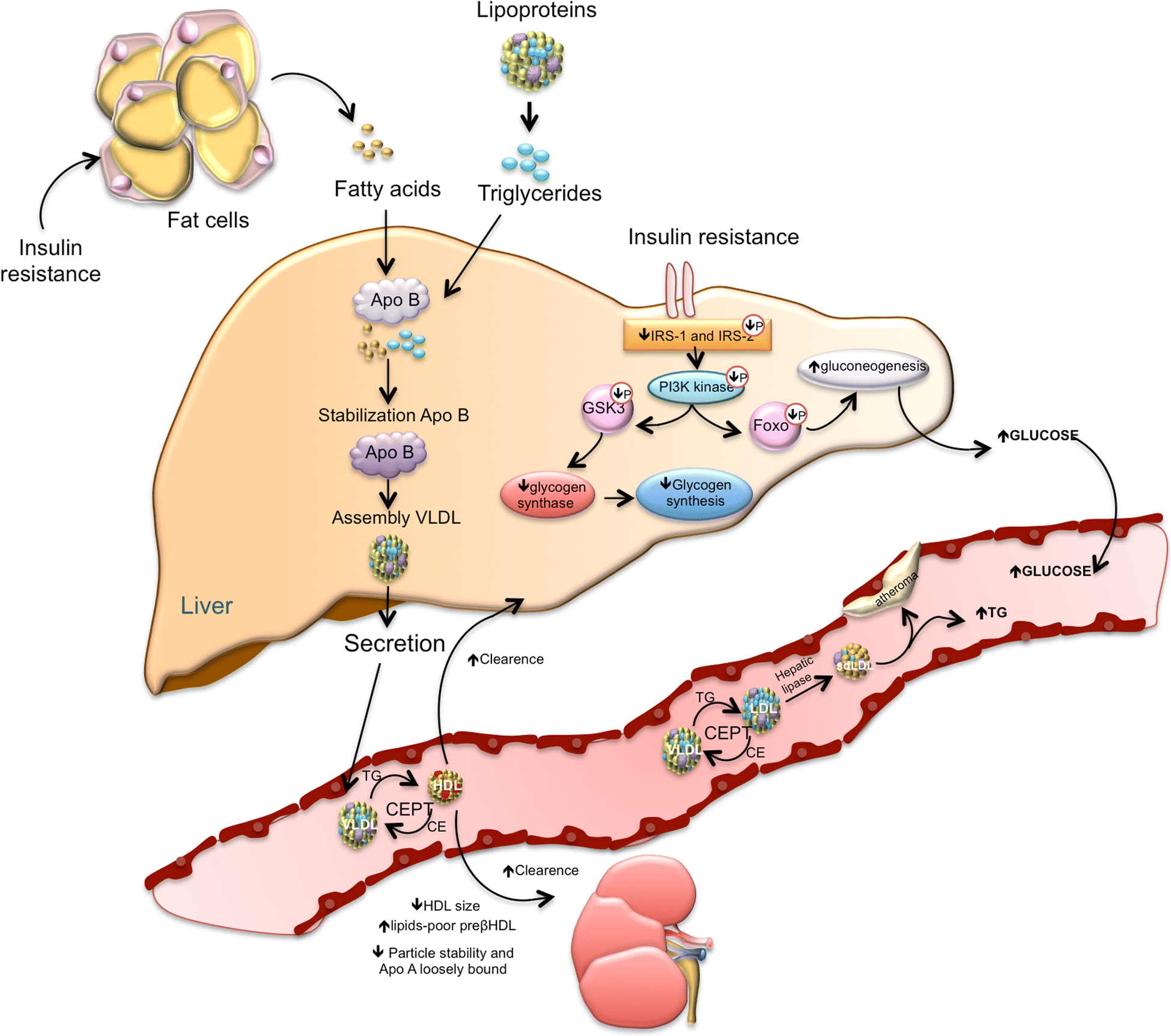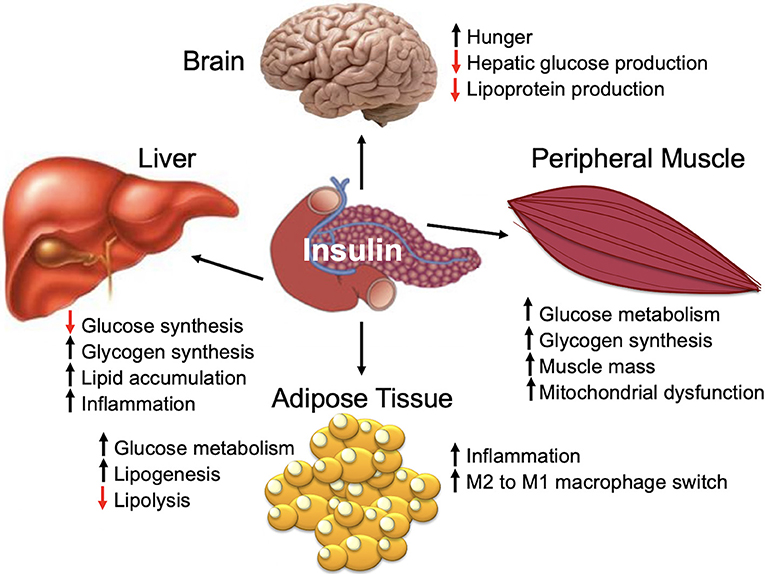When insulin levels are low, as in the fasting state, the balance is pushed toward intracellular protein degradation. Diabetes is a disorder in the way the body uses glucose, a sugar that serves as fuel for the body.

Schematic summarising the effects of insulin in δ cells
Insulin binds to its receptor (1), which starts many protein activation cascades (2).

Insulin and its effects on cells. The body breaks these nutrients down into sugar molecules, amino acid molecules, and lipid molecules, respectively. Insulin binds to the target cells and allows the cell to pull glucose in through its membranes via signal transduction. Insulinhas two other essential effects that are required for fat storage in adipose cells:
Insulin stimulates the growth and proliferation of a variety of cells in culture. Once glucose is in your bloodstream, insulin signals cells throughout your body to absorb the sugar and use it for energy. Insulin also helps balance your blood glucose levels.
Upon insulin’s binding to the ir, insulin rapidly increases tyrosine phosphorylation of its own receptor followed by the phosphorylation of the insulin receptor. Insulin also affects other metabolic processes, such as the breakdown of fat or protein. Effect of insulin on glucose uptake and metabolism.
Other notable effects of insulin. As can be seen in the picture, insulin has an effect on a number of cells, including muscle, red blood cells, and fat cells. If the body has sufficient energy, insulin.
Insulin helps control blood glucose levels by signaling the liver and muscle and fat cells to take in glucose from the blood. Therefore, the release of fatty acids from the adipose tissue into the circulating blood is inhibited. Insulin also increases the permiability of many cells to potassium, magnesium.
After a meal, it helps the cells use carbs, fats, and protein as needed, and store what's left (mainly as fat) for the future. The glucose serves as energy to these cells, or it can be converted into fat when needed. Its preparations • regular insulin:
A larger dose speeds up the onset but also delay. Insulin is a protein hormone that contains 51 amino acids. In muscle and liver, insulin increases glycogenesis and decreases glycogenolysis.
This process creates a dangerous buildup of. Insulin is made and secreted by the beta cells of the pancreatic islets, small islands of endocrine cells in the pancreas. Problems with insulin production or use
The onset of regular human insulin is between 30 minutes and an hour, and its effects on blood sugar last around 8 hours. The finding may lead to new strategies for treating the disease. Preclinical studies suggest that insulin has positive effects of facilitating glucose entry into cells and maintaining euglycemia and negative effects of favoring obesity and atherogenesis under certain conditions.
The aim of these experiments was to identify the point in the initiation of the cell cycle that is. When affected by insulin, liver cells are stimulated to conduct glucose uptake. The glucose is then used as an energy source for the cell.
In addition to insulin's effect on entry of glucose into cells, it also stimulates the uptake of amino acids, again contributing to its overall anabolic effect. Else risk of early postprandial hyperglycaemia and late. Some, but not all, of the effects of insulin on growth require.
Insulin helps your cells use glucose for energy. By polymerizing this acid, fahmy’s team was able to increase its ability to bind to receptors in pancreatic cells, improving metabolic functions and, most importantly, reducing unwanted immune cells that destroy beta cells. Understanding insulin sensitivity and diabetes.
Insulin is required by almost all of the body's cells, but its major targets are liver cells, fat cells and muscle cells. This is the enzyme that causes hydrolysis ofthe triglycerides already stored in the fat cells. Insulin therefore helps cells to take in glucose to be used for energy.
Many of the body’s cells rely on insulin to take glucose from the blood for energy. The result is an increase of glucose uptake by cells. Insulin regulates how the body uses and stores glucose and fat.
A new discovery helps explain how adipose tissue (fat) affects insulin sensitivity and results in type 2 diabetes. Insulin is a major regulator of cell metabolism but, in addition, is also a growth factor. When cells can’t use the extra glucose, they begin to burn fat for energy.
In other words, the insulin “vehicle” itself has therapeutic effects, which help restore normal metabolism in the short term and restore. Insulin effects in target cells are mediated by the insulin receptor (ir), a transmembrane protein with enzymatic (tyrosine kinase) activity. Insulin allows the cells in the muscles, fat and liver to absorb glucose that is in the blood.
Insulin is a peptide hormone secreted by the β cells of the pancreatic islets of langerhans and maintains normal blood glucose levels by facilitating cellular glucose uptake, regulating carbohydrate, lipid and protein metabolism and promoting cell division and growth through its mitogenic effects. Insulin and blood glucose levels insulin helps control blood glucose levels by signaling the liver and muscle and fat cells to take in glucose from the blood. In response to insulin, these cells absorb glucose out of the blood, having the net effect of lowering the high blood glucose levels into the normal range.
Insulin exerts all of its known physiological effects by binding to the insulin receptor (insr) on the plasma membrane of target cells. Insulin exerts its effects on immune cells by binding to the insulin receptor (ir), that is, extensively expressed on immune cells, such as neutrophils and monocytes/macrophages.

11 Effects of Insulin on the Body
The effects of obesityinduced impaired insulin signaling

Suggested mechanism of pinitolinduced effects on the

Insulin actions in main insulinsensitive tissues. Insulin

Insulin's role in the human body
DM random blood sugar and fasting blood sugar Diabetes Inc.

Association between insulin resistance and the development

Schematic diagram of the effects of insulin resistance on

Frontiers Metabolic Health, Insulin, and Breast Cancer

Selective Insulin Resistance and the Development of